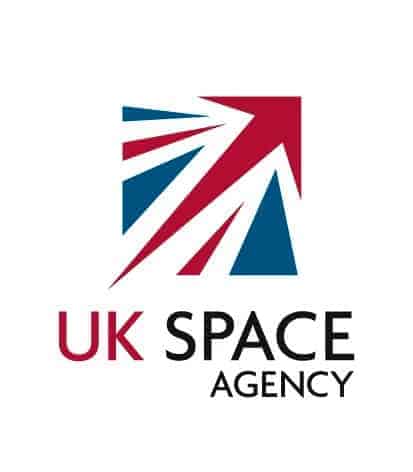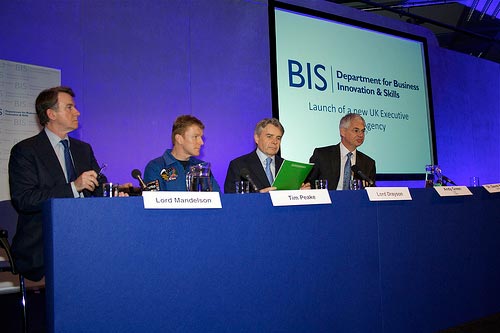
The UK’s science minister Paul Drayson and Peter Mandelson, secretary of state for business, innovation and skills, have today launched the UK Space Agency (UKSA). The new body will take over responsibility for the UK’s space policy and “key” budgets for space under one single management.
The agency, to come into effect on 1 April, will manage around £250m in contracts per year, including the UK’s contribution to major EU projects such as the €3.4bn Galileo global-positioning system and Global Monitoring for Environment and Security. Both are currently funded by the departments for transport and for environment, food and rural affairs, respectively.
The UK spends about £300m per year on civil space research. A large fraction of this goes on the country’s membership of the European Space Agency (ESA), which in 2009 was around £240m, and on its membership of the European Organisation for the Exploitation of Meteorological Satellites, which launches and maintains Earth observation satellites and is currently funded by the UK’s Meteorological Office.
“The action we are taking today shows that we’re really serious about space,” says Drayson. “Britain’s space industry has defied the recession. It can grow to £40bn a year and create 100,000 jobs in 20 years. The government’s commitments on space will help the sector go from strength to strength.”
Innovation centre
At the launch in London today, Drayson and Mandelson also announced a £40m International Space Innovation Centre (ISIC) that will be based at Harwell in Oxfordshire next to the new ESA technical facility, which opened last July.
Funded through public and private money, ISIC is expected to “exploit the data generated by Earth-observation satellites,” as well as using space data to “understand and counter climate change” and advise on the “security and resilience of space systems and services”.
“ISIC will bring together industry and academic research,” says Richard Holdaway, the director of space science and technology for the UK’s Science and Technology Facilities Council (STFC) who first proposed that the UK should build such a centre five years ago. “It will help us to exploit what is a multi-billion pound industry.”
Drayson had earlier this month already indicated that the space agency would manage the ESA subscription fee when he revealed details of his review of the STFC. The review called for the change as a way of protecting the council’s grant programme against rises or falls in the value of the pound against the euro.
However, Keith Mason, STFC’s chief executive, says that the STFC will “continue to play a major role in space research, as a partner of the agency, through our direct involvement in supporting space science and technology, and as the lead in the two National Science and Innovation Campuses at Daresbury and at Harwell, which includes the first ESA centre in the UK”.
The UKSA will have its headquarters in Swindon, UK, and David Williams, director general of the British National Space Centre, will lead the agency until a chief executive is appointed within the next six months.




